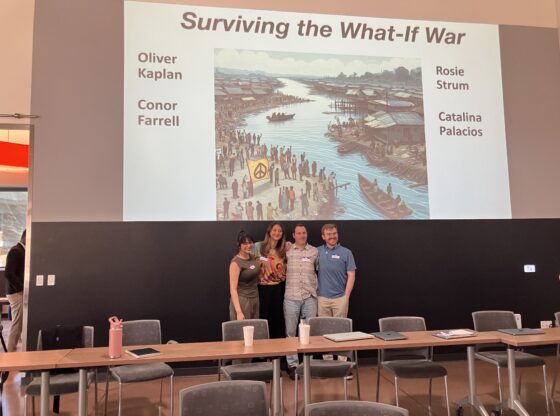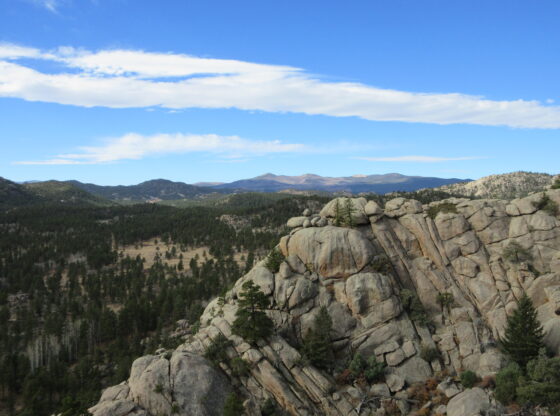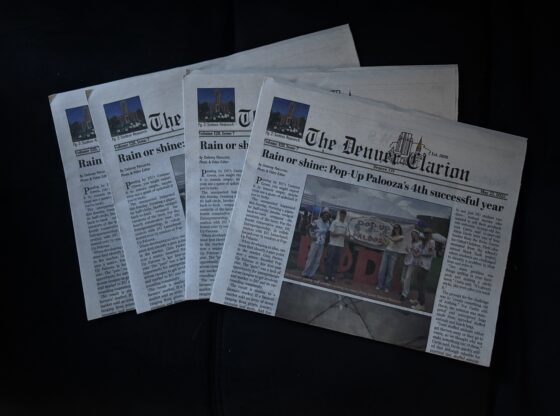Growing up in Vermont, I knew what winter meant. It meant snow-covered hills perfect for sledding, skiing and just about any outdoor activity that involved tossing up the soft, fluffy white stuff. Vermont was — and still is — a snow state, and for me, as a child, that meant a lifetime of snow sports.
Skiing, especially ski racing, became my passion, and December, my birthday month, was always themed around snow and the excitement of the season. However, what was once a guarantee is now a distant memory. As a lifelong winter athlete, I’ve seen firsthand how climate change is not just impacting our environment but also my sport.
The changes I’ve witnessed are subtle at first but hard to ignore over time. When I was younger, I could count on snow to be there when December rolled around. My holiday plans were always centered around the snow – from skiing races to just enjoying the crisp winter air. By the time I was a teenager and becoming more serious about ski racing, however, I noticed the difference.
I went from expecting a winter wonderland in December to hoping for at least a white Christmas, and eventually, I started to accept the fact that snow might not show up in Vermont until January. As global temperatures have risen, Vermont’s snowpack has grown more inconsistent, leaving me, like many winter athletes, to adapt to the uncertain snow conditions.
This decline in reliable snowfall isn’t just a nostalgic cry — it’s a warning sign of a rapidly changing climate that threatens the future of snow sports.
I began to notice the trend in my competitive racing. With national championships taking place in early January, the conditions leading up to those races were changing. As I traveled from race to race across the United States, I saw the same issues emerging: the reliance on man-made snow was growing, and courses were often shortened due to poor snow coverage.
In some places, natural snow was becoming so rare that snow-making machines were running almost nonstop to ensure the courses were skiable. The result was a changed experience: snow was increasingly becoming a luxury, and the challenges of race day were often complicated by inconsistent snow conditions.
When the snow is too scarce for skiing, it means we adapt by spending more time on the treadmill or on the road. This year, the University of Denver Ski Team, which I’m a part of, made an investment that speaks volumes about the state of snow sports: they purchased an indoor treadmill for skiing, a way to simulate the movements and training that used to happen on the mountain. The purchase is both a necessity and a sad display of how snow sports are changing.
It’s not just me or my team grappling with these shifts; it’s a larger trend across the world of snow sports. The longer winters of the past are becoming a rarity. According to the National Ski Areas Association, about 30% of ski areas across North America now rely on artificial snowmaking.
In fact, some resorts are seeing snowmaking equipment run as early as October, and it’s estimated that warmer winters will reduce the amount of natural snow available for skiing by as much as 50% by mid-century.
This means that as athletes, we will see fewer race days, shorter seasons, and an increased focus on artificial solutions instead of pure winter sports. But the impact is not only on athletes like me — the entire industry is affected. Ski resorts, once pillars of winter tourism, are investing in new technologies and adjusting their business models to adapt to the unpredictable future of snow.
For the thousands of people who work in snow-related industries, the effects are deeply felt. The snow sports community is tightly knit, and its economic importance cannot be overstated. According to the Winter Sports Economic Report, the global snow sports industry generates billions of dollars each year, providing jobs for resort workers, instructors, gear manufacturers and more. As climate change accelerates, the loss of consistent snow not only impacts skiers but threatens jobs, livelihoods and the local economies that depend on snow tourism.
But the ramifications of warmer winters go far beyond economic impact. Snow sports offer more than just an athletic pursuit; they provide a connection to nature, a rest from the pressures of daily life. As I watch the seasons change, I can’t help but feel a sense of loss. I’ve had a lifelong relationship with snow and its gradual disappearance has left me questioning the future of snow sports for younger generations. In a world increasingly dominated by technology and artificial solutions, the true spirit of winter — of gliding down a mountain covered in natural snow — may fade into a memory.
The growing challenges we face in snow sports are a reflection of the larger global issue of climate change. Rising temperatures, shifting weather patterns, and unpredictable seasons are reshaping our world. As an athlete, I’m forced to adapt, but that shouldn’t be the reality for future generations.
We need to take action now to reduce carbon emissions, invest in sustainability, and support policies that address climate change. Our future as snow sports enthusiasts depends on it. The snow beneath our skis isn’t just an inconvenience of our needed protection—it’s a symbol of what we stand to lose if we don’t act.
So, what can we do? We can start by advocating for clean energy policies and supporting legislation aimed at reducing carbon emissions. Voting for leaders who prioritize climate action is a crucial step in ensuring that meaningful policies are put in place.
On a personal level, we can all make sustainable choices, such as reducing our reliance on fossil fuels by driving less, using public transportation, or switching to renewable energy sources. Supporting organizations that work to combat climate change, like Protect Our Winters, can also make a difference by amplifying the voices of athletes and outdoor enthusiasts who are directly impacted. This past fall I became a Protect Our Winters ambassador to further advocate for my winter sport, using my voice and my experience to express the increased concern for our climate.
Ski resorts and businesses in the snow industry must also play their part by investing in renewable energy, reducing waste, and implementing more sustainable practices. From using energy-efficient snowmaking technology to promoting eco-friendly transportation options, the industry must recognize that adaptation is no longer optional — it’s necessary for the continuation of snow sports world-wide, for athletes and for businesses.
As I prepare for another season, I can’t help but reflect on the journey ahead. The future of snow sports hinges on our choices today. Will we adapt and innovate, or will we watch as the white slopes of our childhoods become distant memories?
For me, the answer is clear. It’s time to fight for the snow that shaped us, for the dreams that were born on frosty December mornings, and for the generations that deserve a winter worth celebrating.











